The North American Radiology Annual Conference is now a large number of "black technology": Chinese companies such as Lian Ying are eye-catching
The 2018 North American Radiology Annual Conference (RSNA) opened in Chicago's heavy snow, and is eager to grasp the trend of the coming year. The world's leading radio equipment manufacturers and artificial intelligence companies gather here.
The theme of this year's RSNA is "Tomorrow's Radiology Today," a focus on the future of radiology.
Today, the RSNA agenda has been more than halfway. This article interviewed several Chinese companies heading to Chicago and compiled a large amount of RSNA information. I hope to explore the development trend of imaging in the new year through words and pictures.
In particular, Siemens, Lian Ying and other domestic and foreign companies have brought a lot of "black technology" products, we will focus on introduction.
Doctors have fundamentally changed their attitude towards AI
At the end of the first day of the conference, Hui Na, the co-founder of Huiyi Huiying, spoke about RSA's feelings about the participation in the arterial network reporter: "What impressed me the most this year is that everyone's concern is whether AI can be subverted. Medical treatment has changed to explore what kind of role AI should play in the work of imaging doctors. After the breakthrough in the field of pulmonary nodules, people began to think more deeply about more scenes and details."
Compared to the performance of the doctors on RSNA last year, we can see the biggest change in medical AI - the change of concept.
After the opening ceremony of RSNA2018, RSNA Chairman Vijay M. Rao, MD said in an interview with Daily Bulletin: "AI and machine learning applications have effectively proved their worth in radiology, but we only understand the fur of these technologies. Today's AI applications free doctors from repetitive tasks, allowing them to work more efficiently; patients do not have to wait for long periods of time because of technological advances, and the entire radiology is therefore more transparent."
This change is the most profound change this year. Medical artificial intelligence has always been more than just a group of engineers. Without the participation of doctors, there is no feedback from doctors on the use of products, and there is no data provided by doctors in cooperation. Medical artificial intelligence can only survive in the concept of liberating doctors. Without the possibility of becoming a reality.
Therefore, this conceptual advancement is a crucial step in the development of artificial intelligence. Only doctors really accept AI, embrace AI, and AI technology can leave the laboratory and enter the real world.
Software, hardware development and FDA reference
In addition to the change in attitude, many hardware and software products on RSNA show us how life sciences companies use cutting-edge technology to upgrade hardware and service of existing products, and AI plays a key role here. Throughout the show, all vendors are looking at the hardware that AI technology and AI technology enable.
Of course, different companies choose different AI development methods. For example, the AI ​​product line of Lian Ying adopts self-developed mode, while GE chooses domestic Tuma deep dimension as a partner.
In addition, we can look at the hardware breakthrough. The ultra-high field strength MRT of 7T and above has become a housekeeping product for every medical device company. On this basis, leading equipment manufacturers such as Lian Ying and GE will pay more attention to the details, try to break through the limitations of single mode, and constantly pursue the ultimate imaging time.
In terms of artificial intelligence, Chinese AI companies have entered the world's first echelon. According to the AI ​​companies participating in this conference, at this conference, there are more domestic companies participating in the conference, and the scale of participation is even larger. Many overseas companies have come to the booths of domestic enterprises and seek cooperation with domestic enterprises.
This is not only due to the overseas companies' enthusiasm for the domestic market and data. More importantly, domestic enterprises have accumulated enough advantages in talents, algorithms and experience, and many foreign companies are hard to find their backs.
Therefore, dozens of Chinese companies participating in this conference have their own overseas layouts and push artificial intelligence technology overseas in their own way of thinking.
However, there are domestic pain points in China. At the same time of rapid development of AI, NMPA approval does not dare to give up rigor and pursue the advantage of speed. Perhaps we can find a solution from a case approved by the FDA.
For example, at this RSNA meeting, QView Medical announced that its QVCAD, an artificial intelligence CAD system for women's compact breast detection, was approved by the FDA, the world's first FDA-approved breast artificial intelligence CAD system.
Traditional X-ray mammography often results in false negatives due to the dense structure of the mammary gland. The QVCAD system combines innovative C-Thru technology with ABUS, using multiple image pattern recognition processes, using artificial neural networks to detect suspicious breasts. The lesion area, thereby distinguishing between potential breast lesions and normal breast tissue.
Guo Na believes: "The FDA's FDA approval for AI has been completed for 5-6 years, and it is now necessary to conduct rigorous discussions and data pre-processing in the country. This is an inevitable process. It has actually gone very fast."
"Black Technology" of overseas companies
At this RSNA conference, some overseas companies showed us a lot of "black technology."
Siemens Medical's remote scanning assistance system at the RSNA conference - "syngo Virtual Cockpit" is the industry's first remote image scanning assistant system, and experienced medical professionals can be in the "syngo virtual cockpit". The remote connection of Siemens Medical's imaging equipment provides professional remote assistance to staff in different locations, especially those who need to perform complex inspections, and has achieved consistency in medical services in a larger area.
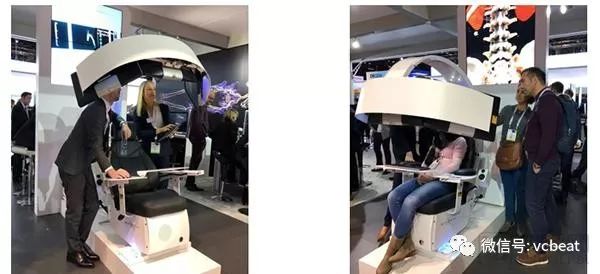
Virtual cabin
Ziehm Imaging is a recognized innovation leader in mobile C-arm X-ray digital imaging. Ziehm Vision RFD 3D uses advanced CMOS technology for better intraoperative control.
Therefore, this mobile C-arm is ideal for high-end orthopedics, trauma and spinal interventions, and highly specialized maxillofacial surgery. The removable 3D C arms are available in a variety of sizes to accommodate a wide range of personal imaging needs from large high-end pelvic surgery to small cochlear surgery.
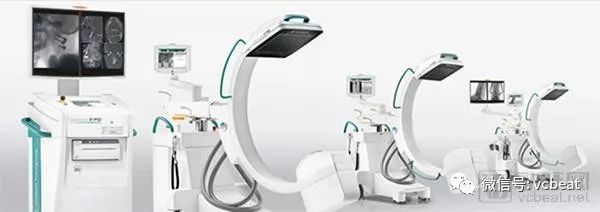
Movable C-arm X-ray digital imaging device
Another eye-catching product is Immersive Touch's VR system for surgical visualization and planning. Traditional x-rays are affected by the angle of view and patient pathology, which may distort the patient's true anatomical pathology. The ImmersiveTouch suite enables doctors to manipulate and research from any angle by quickly converting existing target patient images (CT / MRI) into a precise, fully-intermediate, high-resolution virtual reality (VR) model. Degree of interaction. Doctors are no longer limited to any 2D viewing angle and can discern differences between skin, muscle and bone in 3D human patients.
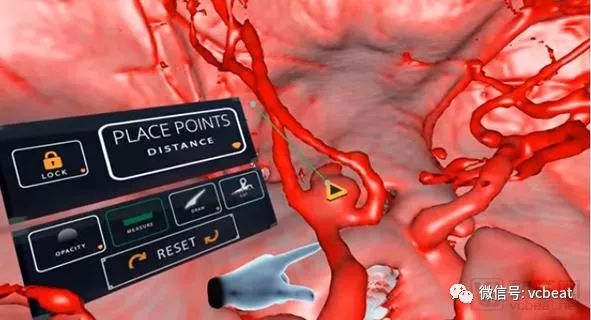
Navigation through surgery with VR technology
Carestream Health showcased the On Sight 3D Extremity System Limb Digital Tomography X-ray machine, CARESTREAM DRX-Evolution Plus, CARESTREAM DRX-Revolution Robot II, DRX-Revolution Nano mobile X-ray system, CARESTREAM DRX-Plus is a new upgraded digital wireless flat panel detector and many other products. R&D has always improved diagnostic efficiency through innovative imaging technology and has greatly improved the patient experience.
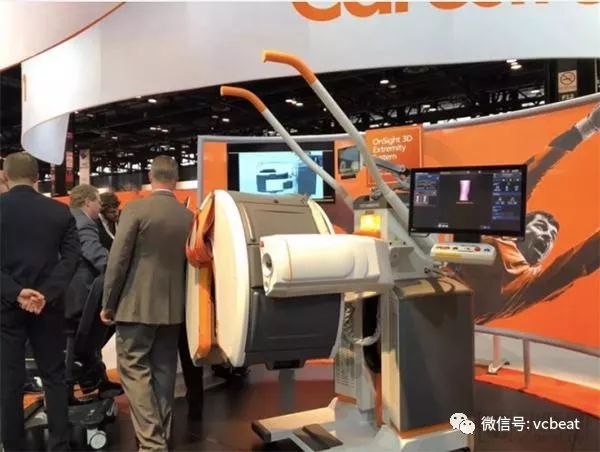
Limb digital tomography X-ray machine
In terms of software, many manufacturers have gathered their eyes on the direction of the breast. In addition to the QView Medical mentioned above, Volpara Solutions has developed a radiologist to provide breast imaging analysis tools to quantify breast lesions by predicting cancer lesions.
Its VolparaDensity measures breast density and objective volume through digital mammography and tomosynthesis data. VolparaEnterprise software is a quantitative breast imaging tool for individualized measurement density, patient X-ray dose customization, breast imaging compression, breast imaging positioning, etc. These factors can be used as biomarkers to improve the accuracy of early detection.
Samsung Medison also demonstrated four AI-based diagnostic imaging software for breast ultrasound, chest-directed digital radiography, intracranial computed tomography, and knee MRI. Automated pulmonary nodule detection (ALND) is a CAD (Computer Aided Detection) solution for detecting lung nodules based on AI technology and is expected to be approved by the FDA.
Chinese team's large number of admissions and their overseas layout
At this conference, a total of 10 domestic companies have booths, namely, Yitu Medical, Huiyi Huiying, Pushing Technology, Tuoma Shenwei, Shenrui Medical, Neusoft Medical, Tongying Medical, Vision Technology, Cypress. Depending on the medical and intra-point technology. As the first time to participate in the joint film, the beauty of its booth can be compared with GE, highlighting the ultimate in Chinese manufacturing.
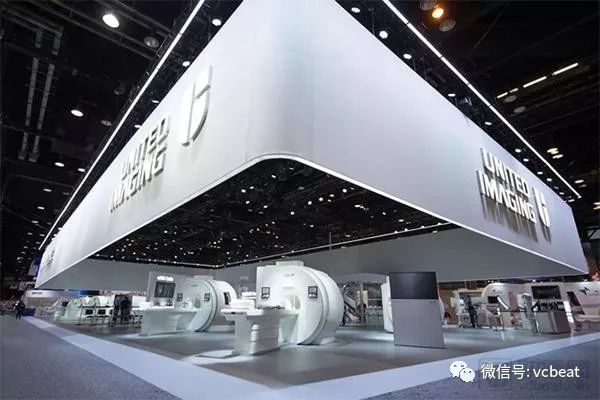
RSNA2018 photo booth
1, according to the medical treatment: cancer screening platform, chest CT diagnosis
China's leading medical AI company, Etu Medical, officially released the world's first medical screening intelligent diagnosis and treatment platform based on medical artificial intelligence technology and the care.aiTM chest CT intelligent 4D imaging system at the North American Radiology Annual Conference (RSNA).
The care.aiTM Chest CT Smart 4D Imaging System is the world's first AI solution for all-bit diagnostics. The system broke through nodule detection for the first time in the industry. The detection ability of the lesion covers more than 95% of chest CT images such as nodules, patchy shadows, sacral shadows, saccular shadows, mediastinal lymph nodes and pleural effusions. The malignant probability of the lesion can also provide a clinical basis for the imaging diagnosis of malignant lesions.
In the overseas layout direction, Fang Wei, vice president of Yitu Medical, believes that: “The European and American markets are highly differentiated. The relationship between supply and demand of doctors and patients is not as serious as domestic ones, and artificial intelligence is difficult to exert the greatest value. For cities such as Singapore, the other side of urban development It is the shrinking of its workforce, and the hot medical tourism in recent years has brought a large number of patients to Singapore."
“So, for Yitu, Singapore is a good starting point. We already have our own sales team and R&D team in Singapore. It will serve as our regional hub for Southeast Asian customers and partners, Southeast Asia, Hong Kong and Customers in areas such as Macau provide the world's top artificial intelligence technologies and solutions, and we will work with regional partners to establish an artificial intelligence ecosystem in Southeast Asia."
2, Huiyi Huiying: Aorta, breast, imaging group research platform
Huiyi Huiying has continuously made new breakthroughs in the field of medical artificial intelligence. In addition to the common products such as lung nodule screening and fracture diagnosis, RSNA also exhibited a unique aortic artificial intelligence cloud. Platform, breast cancer artificial intelligence full-cycle health management platform, imaging group big data research platform, etc., are at the forefront of international peers.
"Breast cancer artificial intelligence full cycle health management platform" is the crystallization of Huiyi Huiying and Intel's cooperation. The cooperation with Intel has greatly enhanced the technology of Huiyi Huiying. The platform, algorithm and a large amount of medical data of Huihui Huiying have been quickly explored, and multidimensional models have been established, which greatly improved the processing of data. And reasoning efficiency, helping to improve the accuracy and efficiency of breast cancer screening.
Today, Huiguang Huiying's radiology platform has entered the leading universities such as the University of Leuven Medical School, and AI full-cycle products have also entered some Japanese hospitals. In the future, Huiyi Huiying will follow the pace of national development and send artificial intelligence diagnostic systems along the Silk Road to countries along the route. Hashestan has deployed more than 30 hospitals to deploy Huiyi Huiying's artificial intelligence platform. .
3, Imagine technology: lungs, chest
Imaginative technology started the domestic medical imaging AI as early as 2015, and completed the international deployment in the United States, Japan, and Germany in just two years. So far, it is assumed that all parties in the world have made relatively breakthrough progress.
At the RSNA meeting, Imagine that technology has brought about multi-modal clinical scene solutions, using AI to break the technical barriers of single-species detection screening, and effectively realize the horizontal and vertical expansion of a disease, starting from disease prevention. Through the entire process of disease screening, diagnosis, treatment, follow-up and education, a new path for artificial intelligence disease management is realized.
Its AI product, InferRead CT Lung, now covers full-path functions such as nodule screening, differential diagnosis, characterization and follow-up, and supports remote interaction and continuing education modules to achieve a single clinical scene in depth, driving the overall level of physician care. It is envisaged that the Institute and the Institute of Advanced Research will accelerate the deepening of the AI ​​solution. Now it has assisted in the diagnosis of 3.05 million patients and 22,000 person-times.
The RSNA's deduced multimodal clinical scenario solution supports lung nodule screening, quantitative analysis of COPD function, quantitative analysis of calcification scores, and bone disease solutions, and is committed to creating a one-stop service platform. In addition, it is assumed that a variety of products will not be limited to a single inspection of the disease, maximize the advantages of Xray and CT, tap the value of the device, and finally achieve a combination of forms across the imaging device.
4. Shen Rui Medical: stroke, bone age
As a pioneer in the field of medical artificial intelligence in China, Shenrui Medical held an academic salon during this RSNA exhibition to discuss the development direction and prospects of artificial intelligence medical technology in the new era with experts in the field of radiology. Following the release of six new products at the CCR conference, Shenrui Medical has launched two new products, Dr. Wise? Stroke Artificial Intelligence Medical Assistance Diagnostic System V2.0 and Dr. Wise? Bone Age Intelligent Aided Assessment System, continuously improving innovation. pace.
The stroke artificial intelligence medical auxiliary diagnosis system is based on the CT automatic detection system for hemorrhagic cerebrovascular disease lesions, and the detection rate is improved on the basis of the original, and the subdural hemorrhage and epidural hemorrhage are increased. Detection and classification of subarachnoid hemorrhage and intraventricular hematoma, to achieve accurate segmentation and attribute recognition for each type of bleeding, to help imaging doctors, emergency doctors to find lesions in the first time, and to give different types of lesions Volume, for complex intracranial hemorrhage, can detect and analyze complex lesions.
Another bone age AI is based on an optimized deep learning algorithm and tens of thousands of images covering children of different ages, genders, and ethnic groups. Usually, it takes 30 minutes for the doctor to complete the bone age assessment, and the Dr. Wise? bone age intelligent assistant assessment system takes only a few seconds. At the same time, the Dr. Wise? bone age intelligent assistant assessment system automatically detects and grades the callus by artificial intelligence. , to achieve automatic calculations, and to issue automated reports to improve diagnostic efficiency while improving diagnostic accuracy.
5, Tumar deep dimension: chest, stroke, breast, liver
As a globalized high-tech medical AI company, Tumar Shenwei exhibited the Discover/Lung Nodule pulmonary nodule intelligent diagnosis system at this RSNA exhibition. It also showed the latest four medical image-assisted diagnosis systems, namely the chest. X-ray intelligent diagnosis system (σ-Discover/Lung DR), mammography intelligent diagnosis system (σ-Discover/Mammo), CT intelligent diagnosis system (σ-Discover/Stroke CT) and liver CT intelligent diagnosis system (σ -Discover/Liver CT). At present, a number of products have entered the US FDA approval stage, and the promotion of the US market is just around the corner. Tuma Deep is also active and stable in other global markets. At present, it has conducted review and test work in Europe, Japan, Hong Kong and other places, and the global layout has begun to emerge.
6, see technology: lungs, chest, liver cancer, cervical cancer
At this RSNA, the products displayed by Vision Technology include Lung Sight lung CT image artificial intelligence auxiliary diagnosis system, DR Sight chest X-ray AI artificial auxiliary diagnosis system, LiverSight liver cancer artificial intelligence screening system, Cevix Sight cervical cancer liquid Basal cell artificial intelligence screening system.
Now, Vision Technology has a number of partners in China and Hong Kong. The strategy was to initially promote products in Southeast Asia and Asia, and then move to other continents, including partnerships and trials with Australian private test centers, expanding business and research collaborations with other hospitals and universities in the region; and signing agreements with Japanese companies The memorandum focuses on the healthcare market and introduces Imsight AI to the Japanese market; it has established partnerships with PACS and Pharma companies in the US, Canada and the European Union. In the future, Vision Technology will work with partners to further research these new markets and actively apply for FDA approval.
7, Baishi Medical: lung, nasopharyngeal cancer
This intelligent diagnostic product brought by Baishi Medical can provide more than 94% of common diseases in the lungs including: pulmonary nodules, lung tumors, pneumonia, tuberculosis, lung infection and chronic obstructive pulmonary disease. One-button diagnostics.
8, point technology: lung nodules, cooperation EBM
The first time to go to the United States is the startup company's technology. Together with the strategic partner EMB, they will open up markets in Taiwan, Japan, Southeast Asia and the Middle East, laying the foundation for business cooperation in the United States.
The joint appearance of RSNA will be a landmark event for strategic cooperation with EBM and a touchstone for global business within the site.
The founder Ge Liang said: "Cooperating with EBM is an important strategic layout of our company. This will open up more domestic hospitals and overseas markets for us. It is another commercialization after the strategic cooperation with Yunnan Shan State. Successful examples. At the same time, we will also provide more help to doctors and patients.†In cooperation with EBM, “Lung Changhao†will be directly embedded in the PACS system as the first pulmonary nodule artificial intelligence product, entering EBM. 3,500 cooperative hospitals worldwide.
9. Neusoft Medical: Radiology and Nuclear Medicine, Clinical Applications
This year, Neusoft Medical participated in RSNA for the 19th time, showing itself to the world a completely different self every year.
In 2018, the 20th anniversary of the establishment of Neusoft Medical, relying on 20 years of rapid development and deep accumulation, Neusoft Medical brought a number of innovative achievements "dressing" to attend the North American Radiology Annual Meeting, once again bringing a series of core advantages and concepts. Innovative products with advanced technologies such as artificial intelligence: 256-layer wide-body spectrum CT-NeuViz Glory CT for scanning, imaging, processing, diagnosis and service-oriented full-process artificial intelligence applications; driven by artificial intelligence management (AIM) NeuMR 1.5T; original trackless suspension C-arm structure, a multi-patent innovation dual-rotation center seven-axis intelligent angiography system - NeuAngio 30C DSA; mobile medical device based on intelligent cloud platform - Mobile CT Unit, also typical The military-civilian integration products help the grading diagnosis and treatment, the health China policy, provide powerful weapons for emergency first aid, field border defense, etc.; AI NeuWise PET/CT based on intelligent independent quality control, intelligent self-repair and intelligent vision; Full-chain artificial intelligence medical imaging solution for disease - NeuAI; image for assisted graded diagnosis and treatment cloud platform.
Today, Neusoft Medical's products and services cover more than 9,000 medical institutions in more than 110 countries around the world, with a total installed capacity of more than 30,000 units. 80% of the “Belt and Road†countries are equipped with Neusoft Medical products. Neusoft Medical showed the vitality, self-confidence and responsibility of Chinese national brands to the world, and let the world re-recognize the "Chinese wisdom".
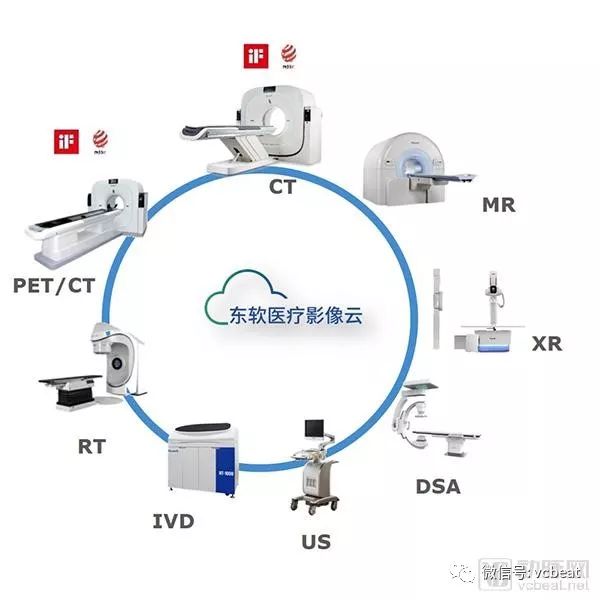
10, Lian Ying: PET / MR, CT, etc.
The performance of the joint photo of the domestic hardware giant at the Art Gallery of Chicago is amazing, showing many of the most cutting-edge products.
In the direction of diagnosis, Lian Ying released the “Time and Space Integration†ultra-clear TOF PET/MR to break through the single mode limitation, breaking through the industry difficulties such as imaging speed constraint and cross-modal fusion limit; its China's first ultra-high-end 640-layer CT highlight The peak of digital diagnosis and treatment equipment can eliminate the threshold of physiological conditions for patients undergoing coronary examination, and comprehensively improve the success rate of scanning, image quality and greatly reduce radiation dose.
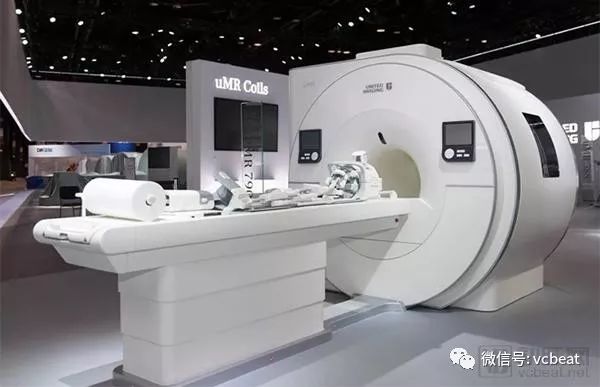
"Time and Space" Super Clear TOF PET/MR
In order to promote precision treatment, the integrated CT-linac of Lian Ying has realized the integration of linear accelerator and CT for the first time, and re-added the “precision†of the core problem in radiotherapy. This "new species" is equipped with the first coaxial bed technology, with diagnostic level CT for accurate analog positioning and high-definition image guidance, which can comprehensively improve the accuracy of radiotherapy and dynamically customize individualized treatment plans for patients.

Integrated CT-linac
On the stage of RSNA, the AI ​​platform of the company, uAI, has undergone another upgrade, and once again launched nearly ten new self-developed prospective medical treatment applications, opening up new possibilities for clinical and scientific research. Based on this, a smart ecosystem of cross-modal AI hardware and software solutions throughout the entire process of disease diagnosis and treatment is being completed.
In addition to the above-mentioned cutting-edge equipment, Lian Ying also exhibited a number of core components of the product, including MR gradient power amplifier, MR RF power amplifier, new generation digital spectrometer, integrated digital photoconductive detector, CT space-time detector, etc. The power of China is displayed to the world.
The joint photo studio in Houston will be completed next year, and a core team of fully localized marketing and service with extensive industry experience has been formed. This tough cake in the United States will become the largest overseas market for the joint film layout, which means that the company has reached the forefront of world technology manufacturing.
In addition to China and the United States, Lian Ying has also entered nearly 20 countries and regions such as Japan, Southeast Asia, the Middle East, Europe, Africa and South America. In the future, Lian Ying will be more actively involved in global market and industry collaboration, and constantly create value for customers with innovative technologies and services.
Window Screen
In generally, the Window Screen including stainless steel window screen, aluminum window screen, alloy window screen, fiberglass window screen, etc .
The weave type is flat weaving.
Surface treatment of window screen: painted, glavanized, PVC, etc .
The window screen is generally used in hotels, public construction, civil buiding block of the mosquitoes and other insects.
Advantages of window screen :
light weight
good toughness
embroidery
ventilated good corrosion resistance
easy to clean

Window Screen,Aluminum Window Screen,Plastic Window Screen,Stainless Steel Window Screen,Stainless Steel Wire Mesh
ANPING COUNTY SHANGCHEN WIREMESH PRODUCTS CO.,LTD , https://www.scwpwiremesh.com